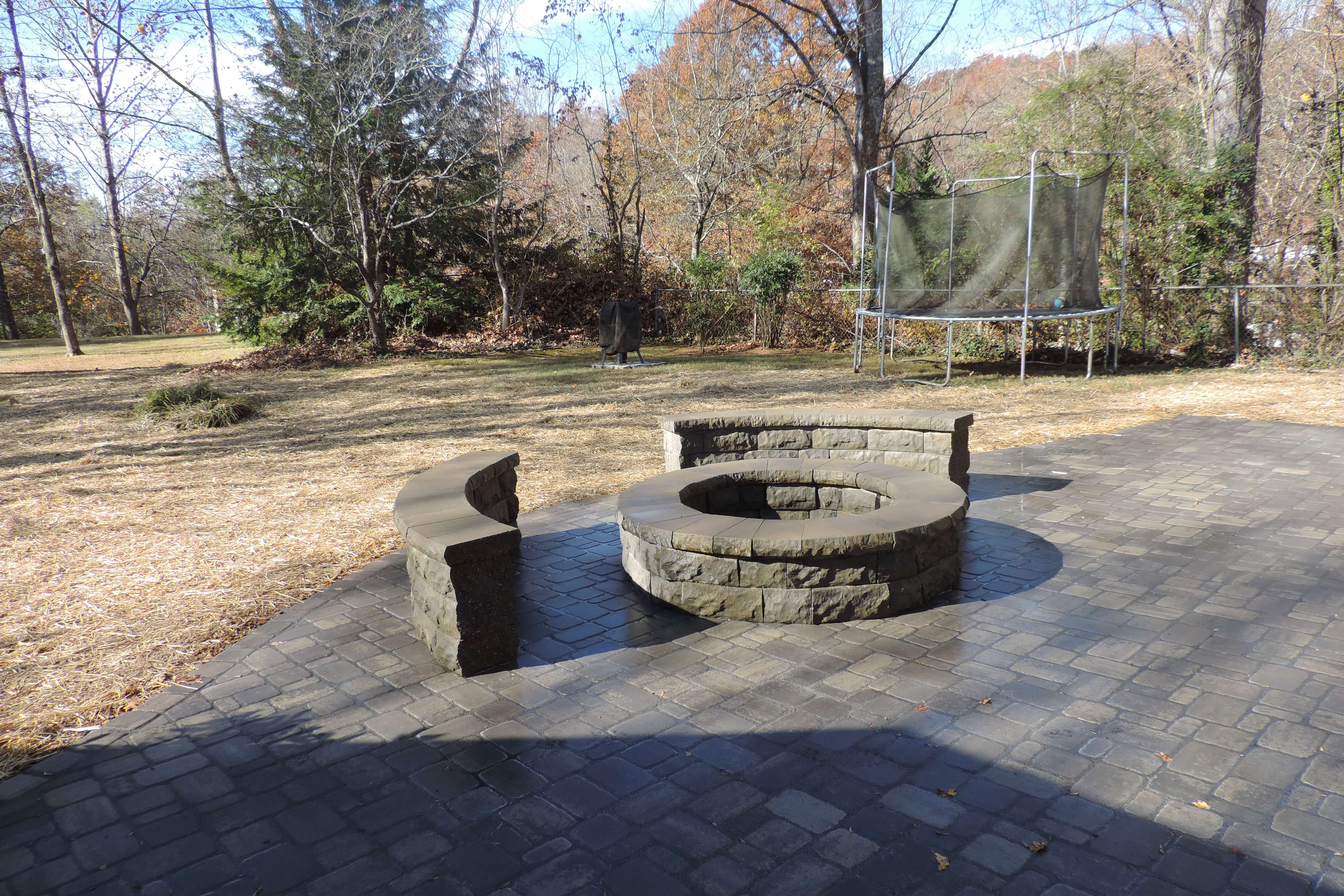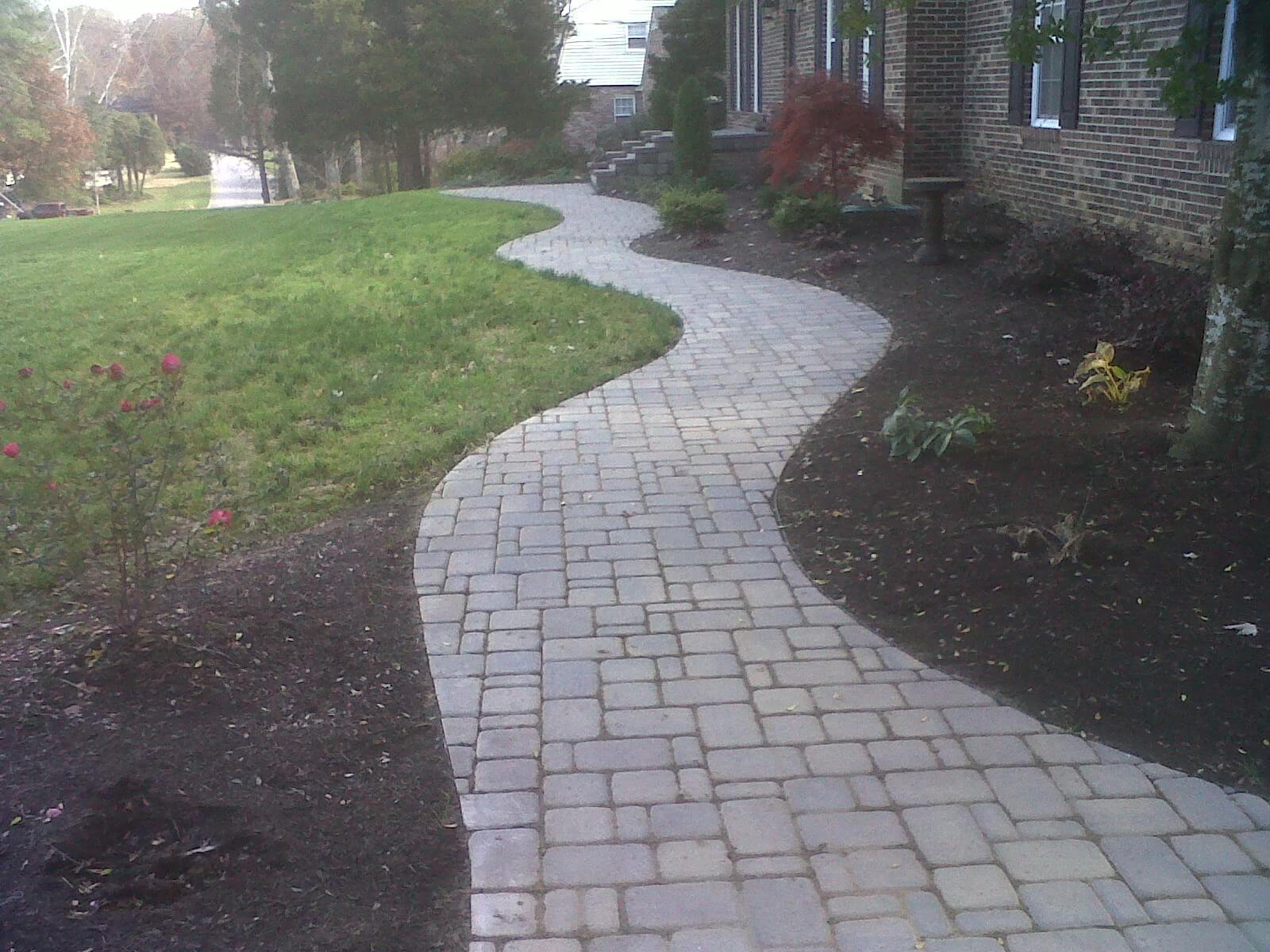Pavers or Concrete? The Big Decision for Your Pathway
As a homeowner in Oak Ridge, Knoxville, or the surrounding areas, you’re likely thinking about the best material for your outdoor pathway. Should you go with pavers, offering unique styles and durability, or concrete, known for its affordability and smooth finish? We get it—choosing the right material matters, and it’s not always an easy decision.
At Willow Ridge Garden Center and Landscaping, we specialize in designing and building customized outdoor spaces that enhance both the beauty and function of your home. With decades of experience, we know the pros and cons of both pavers and concrete. This guide will help you confidently choose the best option for your needs.
Aesthetics: Customization vs. Simplicity
Pavers: Endless Design Possibilities
Pavers offer an incredible range of shapes, sizes, colors, and textures, allowing for completely customized designs. Whether you want an elegant cobblestone look, a sleek modern aesthetic, or a rustic charm, pavers give you unlimited creative options.
Concrete: A Clean, Minimalist Look
Concrete provides a smooth and uniform appearance, making it an excellent choice for modern or minimalist landscapes. However, the standard gray slab may not match every style.
Stamped Concrete: A Middle Ground?
Stamped concrete is a popular way to mimic the appearance of stone or brick while maintaining the affordability of standard concrete. While it enhances visual appeal, it still has concrete’s tendency to crack over time.
Durability: Which Material Stands the Test of Time?
How Pavers Handle Heavy Traffic and Weather Changes
At Willow Ridge, we’ve seen firsthand how well-installed pavers can last for decades. They are designed to withstand heavy foot traffic, and because they are placed individually, they flex with the ground, reducing the chance of cracking.
Concrete’s Strength and Weakness: Cracking Over Time
Concrete is durable, but it’s prone to cracking over time, especially in Tennessee’s freeze-thaw climate. While sealing can help extend its lifespan, cracks often require costly repairs.
What to Expect in 5, 10, and 20 Years
- Pavers after 5+ years: Minimal maintenance needed, occasional re-leveling.
- Concrete after 5+ years: May show minor cracks.
- Pavers after 10+ years: Still intact with proper care.
- Concrete after 10+ years: Likely cracked and needing resurfacing or replacement.
- Pavers after 20+ years: With proper maintenance, still in excellent shape. Some pavers may need to be replaced or re-leveled, but the structure remains solid.
- Concrete after 20+ years: Significant cracking or deterioration likely. May require full replacement or major repairs.
Maintenance: What’s Easier to Care For?
Paver Repairs: Simple but Require Attention
Pavers are easy to repair—if one gets damaged, you can replace that single piece rather than redoing an entire section.
Concrete Maintenance: Low Upkeep but Costly Repairs
Concrete requires less routine maintenance, but once cracks appear, repairs can be expensive and difficult.
Preventing Weeds, Cracks, and Stains
- For pavers: Polymeric sand between joints prevents weeds.
- For concrete: Sealing the surface helps prevent cracks and stains.
- For both: Regular cleaning and sealing extend lifespan.
Cost Comparison: Upfront Investment vs. Long-Term Value
Installation Costs: Pavers vs. Concrete
- Pavers: Higher initial cost due to labor and material expenses.
- Concrete: More affordable upfront, especially for larger areas.
Long-Term Costs: Repairs, Replacements, and Resale Value
While concrete is cheaper initially, pavers often save money long-term due to easier repairs and increased property value.
Budgeting for Your Ideal Pathway
Looking for a budget-friendly option? Consider using concrete for main surfaces with paver edging for a stylish touch.
Installation Process: What to Expect
Paver Installation: Precision and Time Required
- Requires excavation and a stable base.
- Each paver is laid individually, requiring expert alignment.
- Takes longer to install but results in a high-end look.
Concrete Pouring: A Faster Solution
- Requires excavation and a stable base.
- Poured in one step, making installation quicker.
- Needs curing time before use.
DIY vs. Professional Installation: What’s Best?
While some homeowners attempt DIY paver installation, professional expertise ensures a long-lasting, level surface. Concrete also requires professional handling for proper mixing, pouring, and curing.
Water Drainage: How Each Material Handles Rainwater
Why Pavers Are Better for Drainage
Pavers naturally allow water to drain through the joints, reducing pooling and runoff issues.
Concrete Drainage Issues and Prevention
Without proper grading, concrete can lead to standing water. Adding a drainage system may be necessary.
Best Practices for Avoiding Puddles and Water Damage
Professional installation with proper grading is key for both pavers and concrete.
Which One is Right for You?
Choosing Based on Your Home’s Needs and Style
- Want design flexibility and easier repairs? Go with pavers.
- Prefer a cost-effective, simple solution? Concrete may be right for you.
Questions to Ask Before Making a Decision
- What’s my budget?
- How much maintenance am I willing to do?
- Do I want a highly customized look?
- How long do I plan to stay in this home?
The Final Verdict: Pavers or Concrete?
Both materials offer benefits. If longevity, customization, and resale value are your priorities, pavers are the winner. If affordability and quick installation are more important, concrete is a solid choice.
Why Trust Willow Ridge Garden Center and Landscaping?
At Willow Ridge Garden Center and Landscaping, we specialize in customizing pathways to fit your home’s aesthetic and functional needs. We take pride in our expert craftsmanship and commitment to customer satisfaction. If you’re considering a new pathway in Oak Ridge, Knoxville, or surrounding areas, we’re here to help.
Next Steps: Get Expert Advice for Your Outdoor Project
Want to discuss your project with a professional? Contact Willow Ridge Garden Center and Landscaping today!


